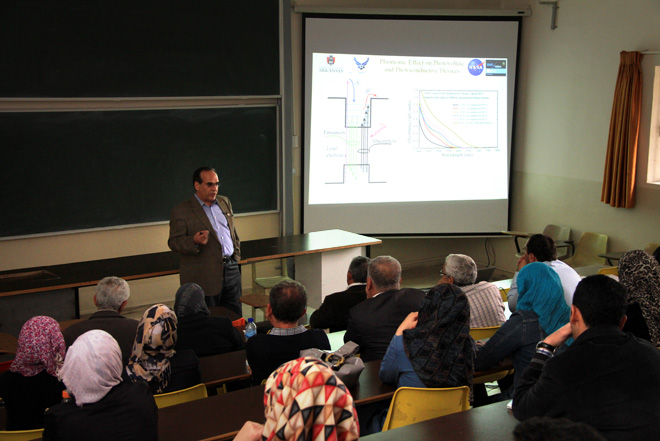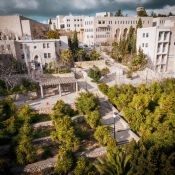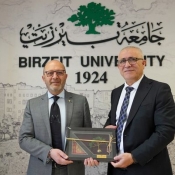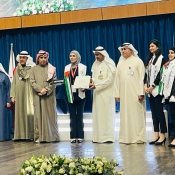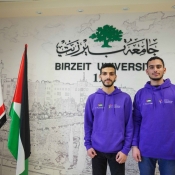Physics Professor Manasreh Describes Development of Nanocrystals and Nanoparticals
American-Palestinian scientist and University of Arkansas Professor Omar Manasreh visited Birzeit University’s physics department on April 9, 2014. Manasreh delivered a lecture on “Plasmonic effect on photovoltaic and photoconductive devices.”
After describing his research laboratories and the young scientists working with him, Professor Manasreh explained the techniques they use in their laboratories to grow semiconductor nanocrystals and metallic nanoparticles that can enhance the performance of various devices, including solar cells, computers, communication systems and many other devices.
The coupling of surface plasmon to optoelectronic devices extends the performance and operation of these devices to limits that are currently unattainable with pristine devices, as their sizes continue to get smaller below 100 nanometers (a nanometer is one million times smaller than a millimeter). Manasreh explained that the size reduction of any optoelectronic device leads to two important advantages, First, the dark current is reduced, which leads to a significant enhancement in the device’s performance and figures of merit and second, the size of any junction in the device is reduced causing a substantial reduction in the junction capacitance and leading to a much faster device since the cut-off frequency is inversely proportional to the junction capacitance.
At the end of the colloquium, Manasreh showed the results of his current research activities regarding solar cells, which are mostly fabricated from InAs quantum dots structure. Finally, he discussed the antireflection effect gained by using sol-gel nanostructures.
Professor Manasreh left Palestine when he was a high school student in 1970 and this is his first visit to Palestine. More information on Professor Manasreh and his research activities can be found at the university website, http://www.uark.edu/ua/manasreh/ .

